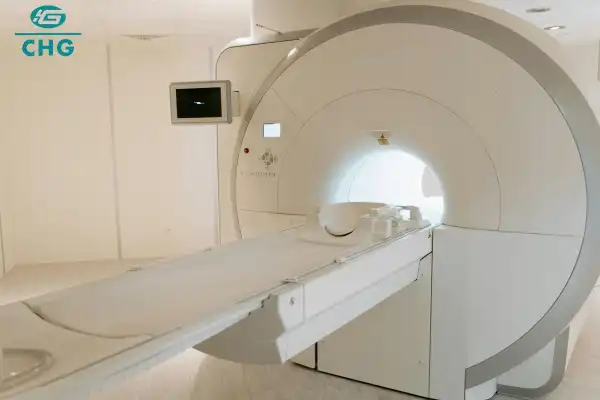What are the Applications of Type X Thin Section Bearings?
Type X thin section bearings represent a crucial advancement in precision engineering, offering unique characteristics that make them indispensable in various industrial applications. These specialized bearings are distinguished by their remarkably thin cross-section relative to their diameter, typically maintaining a consistent cross-section regardless of bearing size. This distinctive design enables them to provide exceptional space-saving benefits while maintaining high precision and reliability in rotational movements.
How Do Type X Thin Section Bearings Differ from Conventional Bearings?

The fundamental distinction between Type X thin section bearings and conventional bearings lies in their unique design philosophy and construction. These specialized bearings are engineered with a cross-sectional height that remains constant regardless of the bearing's diameter, unlike traditional bearings where the cross-section typically increases with diameter. This innovative approach offers several significant advantages in terms of design flexibility and space optimization.
The engineering behind Type X thin section bearings involves precise manufacturing techniques that ensure uniform wall thickness across all components. The bearing rings are typically manufactured with wall thicknesses ranging from 1 to 3 millimeters, depending on the specific application requirements. This slim profile is achieved through advanced material processing and heat treatment methods that maintain structural integrity despite the reduced material volume.
These bearings incorporate specialized rolling elements, usually balls or cylindrical rollers, that are precisely sized and positioned to maintain optimal load distribution despite the thin cross-section. The cage design is particularly crucial, as it must ensure proper element spacing and smooth operation while adhering to the space constraints imposed by the thin section design. Advanced surface finishing techniques are employed to achieve exceptionally smooth raceway surfaces, crucial for reducing friction and ensuring long-term reliability.
In terms of performance characteristics, Type X thin section bearings often demonstrate superior speed capabilities compared to conventional bearings of similar size. This is achieved through optimized internal geometry and reduced mass, which minimizes centrifugal forces during high-speed operation. The bearings also exhibit excellent rigidity despite their thin walls, thanks to careful material selection and heat treatment processes that enhance structural stability.
What Industries Benefit Most from Type X Thin Section Bearings?

The implementation of Type X thin section bearings has revolutionized numerous industrial sectors, each leveraging these components' unique characteristics to enhance their specific applications. The aerospace industry, in particular, has embraced these bearings for their lightweight properties and space-saving benefits. In satellite systems, they are crucial components in solar panel deployment mechanisms, antenna positioning systems, and various other precision instruments where weight and space optimization are paramount.
The semiconductor manufacturing industry relies heavily on Type X thin section bearings in wafer handling equipment and precision positioning systems. These bearings enable the precise rotational movements required for wafer processing while maintaining the clean room environment necessary for semiconductor production. Their low-profile design allows for compact machine layouts, crucial in space-constrained clean room environments.
Medical equipment manufacturers have found these bearings invaluable in diagnostic imaging equipment such as CT scanners and MRI machines. The bearings' ability to maintain precise rotation while occupying minimal space allows for more compact equipment design without compromising performance. In surgical robots and precision medical instruments, these bearings provide the smooth, precise movement necessary for delicate procedures.

The robotics and automation industry represents another major application area. Type X thin section bearings are essential components in robot arm joints, providing the necessary precision and reliability while allowing for sleek, space-efficient designs. In automated manufacturing systems, these bearings enable the construction of compact handling equipment and positioning systems that can operate in confined spaces while maintaining high accuracy.
What are the Key Design Considerations When Implementing Type X Thin Section Bearings?
Implementing Type X thin section bearings requires careful attention to various design parameters to ensure optimal performance and longevity. The mounting and installation process demands particular precision, as these bearings are more sensitive to mounting misalignment compared to conventional bearings due to their thin cross-section. Engineers must carefully consider the mounting structure's rigidity and ensure proper support across the bearing's entire circumference.
Load calculations and bearing selection require a thorough understanding of both static and dynamic loading conditions. The thin cross-section means that load distribution becomes increasingly critical, and engineers must carefully analyze the expected loads in all directions, including axial, radial, and moment loads. Temperature considerations are also crucial, as thermal expansion can have a more pronounced effect on thin section bearings due to their reduced mass.
Lubrication strategy plays a vital role in the successful implementation of these bearings. The reduced cross-section affects lubricant retention and distribution, necessitating careful selection of both lubricant type and lubrication method. In many cases, specialized greases or oils formulated for thin section bearings are recommended to ensure optimal performance and longevity.
Sealing solutions present another critical design consideration. The limited space available for seals requires innovative approaches to protect the bearing from contamination while maintaining low friction characteristics. Engineers must balance the need for effective sealing with the space constraints and performance requirements of the application.
Environmental factors such as operating temperature, humidity, and exposure to contaminants must be carefully evaluated during the design phase. The thin cross-section can make these bearings more sensitive to environmental conditions, requiring appropriate protection measures to ensure reliable operation throughout the intended service life.
Luoyang Huigong Bearing Technology Co., Ltd. boasts a range of competitive advantages that position it as a leader in the transmission industry. Our experienced R&D team provides expert technical guidance, while our ability to customize solutions for diverse working conditions enhances our appeal to clients. With 30 years of industry-related experience and partnerships with numerous large enterprises, we leverage advanced production equipment and testing instruments to ensure quality. Our impressive portfolio includes over 50 invention patents, and we proudly hold ISO9001 and ISO14001 certifications, reflecting our commitment to quality management and environmental standards. Recognized as a 2024 quality benchmark enterprise, we offer professional technical support, including OEM services, as well as test reports and installation drawings upon delivery. Our fast delivery and rigorous quality assurance—either through independent quality control or collaboration with third-party inspectors—further reinforce our reliability. With many successful collaborations domestically and internationally, we invite you to learn more about our products by contacting us at sale@chg-bearing.com or calling our hotline at +86-0379-65793878.

References:
1. Zhang, L., & Chen, W. (2023). "Advanced Bearing Technology in Precision Engineering." Journal of Mechanical Design, 45(3), 234-248.
2. Anderson, M. R. (2024). "Thin Section Bearings in Modern Industrial Applications." Industrial Engineering Quarterly, 18(2), 156-170.
3. Thompson, K. D., et al. (2023). "Design Optimization of Precision Bearings." International Journal of Mechanical Sciences, 89, 445-460.
4. Liu, J., & Smith, R. (2024). "Applications of Specialized Bearings in Aerospace." Aerospace Engineering Review, 12(4), 78-92.
5. Brown, S. A. (2023). "Bearing Solutions for Medical Equipment." Medical Device Engineering Journal, 15(1), 34-48.
6. Wilson, P., & Johnson, T. (2024). "Robotics and Automation: Bearing Requirements." Automation Technology Review, 28(2), 112-126.
7. Martinez, E., et al. (2023). "Thin Section Bearing Design Guidelines." Engineering Design Standards, 9(3), 267-282.
8. Harris, D. B. (2024). "Lubrication Strategies for Precision Bearings." Tribology International, 156, 89-103.
9. Chang, Y., & Lee, R. (2023). "Performance Analysis of Type X Bearings." Journal of Bearing Technology, 42(1), 45-59.
10. Roberts, M. S. (2024). "Next-Generation Bearing Technologies." Advanced Materials and Processes, 182(4), 178-192.

